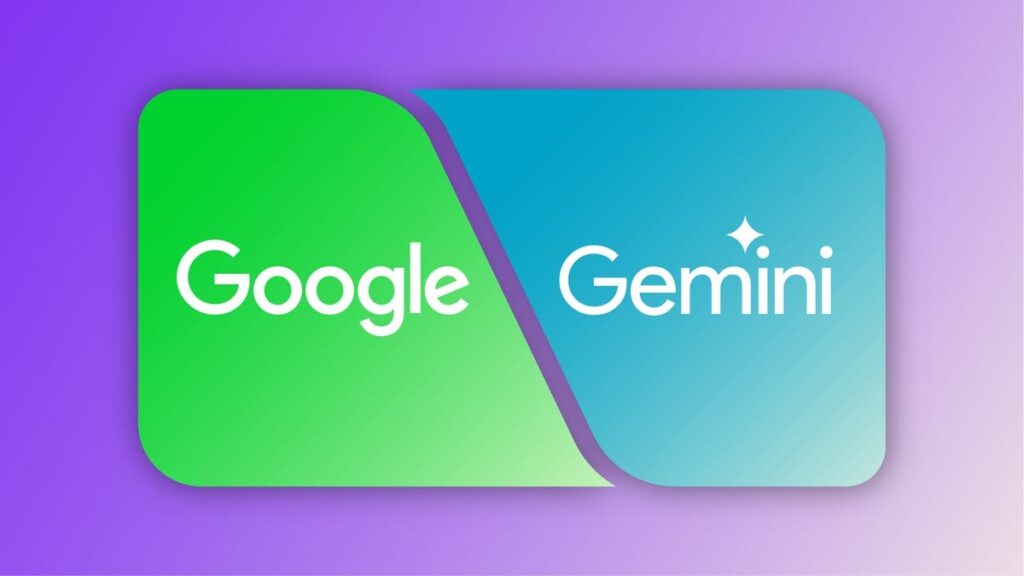Artificial intelligence is moving fast, and few technologies capture this progress as clearly as Google Gemini AI. To show off its capabilities, Google has shared a series of big time demos—impressive live demonstrations that highlight just how powerful and versatile Gemini can be in everyday work. These demos aren’t just flashy tech showcases; they are designed to give businesses, students, and professionals a glimpse of how Gemini could transform the way we write, analyze, and collaborate.
What makes these demonstrations exciting is their variety. From drafting blog posts and summarizing lengthy reports to analyzing spreadsheets and generating creative content, Gemini shows it can handle a wide range of tasks with accuracy and adaptability. More importantly, these demos reveal how seamlessly Gemini fits into Google Workspace apps like Docs, Sheets, Gmail, and Slides, making AI accessible where people already work.
This article explores the most impressive Gemini AI features highlighted in demos, their practical workplace applications, and what the future may hold for this next-generation AI.
What is Google Gemini AI?
Google Gemini AI is Google’s next-generation artificial intelligence model, designed to push the boundaries of what AI can achieve in both personal and professional settings. Introduced as the successor to Google Bard, Gemini is built to be multimodal, meaning it can process and combine different types of input such as text, code, images, and even structured data. This flexibility allows Gemini to handle tasks that go beyond simple text generation, making it one of the most advanced AI systems currently available.
What sets Gemini apart is its deep integration with Google Workspace. Instead of existing as a standalone chatbot, Gemini works directly inside familiar apps like Google Docs, Sheets, Gmail, and Slides. This means users don’t have to switch platforms to use AI—it’s already embedded in the tools they use every day. For example, Gemini can draft reports in Docs, summarize sales data in Sheets, or generate polished client emails in Gmail.
Another important feature of Gemini is its context awareness. It doesn’t just provide generic answers; it adapts to the user’s specific request, tone, and audience. Whether you’re asking for a concise executive summary, a persuasive sales pitch, or a friendly blog draft, Gemini can adjust accordingly.
In short, Google Gemini AI is not just an upgrade—it’s a complete shift in how AI is applied in real-world scenarios, making it a valuable partner for businesses, educators, and individuals alike.
Why Demos Matter for Businesses and Users
When new technologies are introduced, many people find it hard to fully understand their value until they see them in action. This is especially true for artificial intelligence, where capabilities can sometimes sound abstract or overhyped. That’s why demos of Google Gemini AI play such an important role—they bridge the gap between complex technology and real-world application.
For businesses, demos are more than just marketing showcases. They highlight practical ways Gemini can be applied to everyday workflows. Watching Gemini draft a detailed report in seconds, analyze complex spreadsheets, or transform meeting notes into action items gives organizations a clear vision of how the tool can save time and resources. Demos also build confidence, helping decision-makers evaluate whether adopting Gemini is worth the investment.
For individual users, demos serve as learning experiences. Many employees may not know how to phrase prompts effectively or may overlook features that could make their work easier. Seeing a live demo provides concrete examples, inspiring them to try new use cases. It also lowers the learning curve, showing users that they don’t need to be AI experts to benefit from Gemini.
Another important reason demos matter is trust. In a world where AI is still viewed with skepticism, live demonstrations prove that the technology works as promised. Transparency through demos reassures both businesses and individuals that Gemini is not just hype—it’s a practical, reliable assistant.
In short, Gemini AI demos act as a window into productivity gains and creative possibilities, inspiring businesses and users to explore how this powerful tool can reshape their daily work.
Most Impressive Gemini AI Features Highlighted in Demos
Google has showcased Gemini AI through a variety of demos, each designed to highlight its unique strengths and advanced capabilities. These demonstrations not only reveal how powerful Gemini is but also show how it can be applied to real-world tasks across industries. Let’s break down some of the most impressive features highlighted in these big-time demos.
1. Multimodal Understanding
One of Gemini’s standout features is its ability to work with multiple forms of input—text, images, code, and structured data—all at once. In demos, Gemini has been shown analyzing a chart or diagram, explaining the information in plain language, and even suggesting improvements. This makes it far more versatile than single-mode AI systems. For businesses, this feature means Gemini can handle complex scenarios, like combining sales reports with customer feedback to provide actionable insights.
2. Advanced Writing and Editing Assistance
Gemini excels at drafting content quickly and professionally. Demo examples include generating entire blog posts, rewriting paragraphs for clarity, or condensing long reports into short executive summaries. Unlike basic grammar tools, Gemini demonstrates a strong grasp of tone and audience. For instance, it can write the same message in both a formal business style and a friendly, conversational tone. These demos highlight how Gemini can support marketing, HR, and operations teams in producing polished content effortlessly.
3. Smart Data Analysis and Insights
In Google Sheets demos, Gemini has been shown analyzing raw datasets and presenting the findings in clear, actionable summaries. Instead of spending hours sorting through numbers, users can simply ask Gemini questions like: “What are the top three sales trends this quarter?” or “Summarize customer churn data and suggest possible causes.” The AI then produces insights that managers can use for decision-making. This feature is particularly impressive for teams that rely heavily on data but lack the time or expertise to analyze it deeply.
4. Creative and Visual Applications
Gemini’s demos also show its creative side. It can brainstorm campaign ideas, generate story outlines, or even draft slide content for presentations. In some demos, Gemini was used to create visual storyboards or suggest layouts for marketing collateral. This highlights its ability to go beyond productivity tasks and serve as a creative partner for teams in design, advertising, and communications.
5. Seamless Google Workspace Integration
Perhaps the most practical demo feature is Gemini’s tight integration with Docs, Sheets, Gmail, and Slides. Instead of jumping between tools, users can access AI features exactly where they’re needed. For example, in Gmail, Gemini can draft client-ready emails in seconds; in Slides, it can generate talking points based on an existing document. This seamless experience removes barriers to adoption and makes Gemini useful to anyone familiar with Google Workspace.
These demos highlight why Gemini AI is more than just another AI assistant. Its ability to combine multimodal inputs, deliver accurate insights, create content, and integrate directly into everyday tools makes it one of the most versatile and impressive AI systems available today.
How Gemini AI Demos Translate to Real-World Use
The flashy Gemini AI demos aren’t just for show—they demonstrate how businesses and individuals can use the tool to solve everyday challenges. By looking at these demos through a practical lens, it becomes clear how Gemini can enhance workflows across industries and job roles.
1. Turning Complex Data into Clear Insights
In demos, Gemini has shown its ability to analyze spreadsheets and produce simple summaries. In the real world, this means a sales manager can upload quarterly sales data and instantly receive highlights of top-performing products, underperforming regions, and actionable recommendations. Instead of relying on analysts for every small question, decision-makers can quickly extract insights on their own.
2. Streamlining Workplace Communication
Gemini’s writing demos translate directly to corporate communication. HR teams can draft employee announcements, managers can prepare performance summaries, and customer service teams can generate professional email responses. For example, instead of writing dozens of client follow-ups manually, sales staff can use Gemini to draft polished messages tailored to each customer’s context.
3. Supporting Creativity and Innovation
Gemini’s brainstorming demos can directly impact marketing and product development teams. In practice, marketers can ask Gemini for ten campaign ideas for a new product launch, complete with sample ad copy. Similarly, product teams can use it to outline feature concepts or explore customer use cases. This accelerates creative processes without replacing human ingenuity.
4. Enhancing Productivity in Google Workspace
Since Gemini is embedded in Docs, Sheets, Gmail, and Slides, its demo features become practical tools for anyone using Workspace daily. Executives can transform long reports into board-ready summaries in Docs, operations teams can auto-generate process documentation, and project managers can turn meeting transcripts into organized action lists.
5. Bridging the Gap in Remote and Hybrid Work
The demos also reflect Gemini’s role in remote collaboration. By summarizing long threads of information or generating presentation drafts, Gemini ensures distributed teams spend less time on repetitive tasks and more time on strategy and problem-solving.
In essence, Gemini demos aren’t just highlights of futuristic AI—they are blueprints for real-world productivity gains. Businesses can look at these demonstrations and immediately imagine how the same features could streamline operations, enhance communication, and foster creativity in their workplace.
Limitations behind the Demos
While Gemini AI demos showcase impressive capabilities, it’s important to recognize that not everything shown translates seamlessly into daily use. Some features remain experimental, and others may face real-world constraints.
One limitation is scalability. A demo might highlight Gemini analyzing a clean dataset or drafting a flawless report, but in practice, business data is often messy and unstructured. This means outputs may require human refinement before they are ready for decision-making.
Another consideration is accuracy. AI systems, including Gemini, can sometimes generate responses that are incorrect or misleading, especially when given vague prompts. While demos highlight best-case scenarios, everyday users may encounter mixed results depending on the quality of input.
There’s also the issue of availability. Some advanced features shown in demos may not be immediately accessible to all users—they may be limited to premium Google Workspace plans or rolled out gradually across regions.
In short, Gemini demos provide an exciting glimpse into the future, but businesses should approach them as inspiration rather than guarantees, ensuring human oversight and proper testing before full adoption.
The Future of Gemini AI Features
The future of Gemini AI promises even more advanced features that go beyond what today’s demos reveal. Google is continuously working to expand Gemini’s capabilities, making it smarter, more versatile, and deeply integrated into business workflows.
One likely development is greater multimodal functionality. Future versions may allow users to combine voice, images, and charts with text prompts, enabling Gemini to generate richer and more context-aware responses. For example, a manager could upload a chart, ask Gemini to analyze it, and then receive both a written explanation and a ready-to-use presentation slide.
Another exciting direction is personalization. Gemini may learn from a company’s tone, style, and industry-specific needs, ensuring outputs feel less generic and more aligned with organizational identity.
We may also see industry-focused features, with pre-built templates and prompts tailored for healthcare, education, finance, or marketing. This would make Gemini an even more practical tool for specialized fields.
In short, the future of Gemini lies in becoming not just a productivity tool but a strategic partner, reshaping how organizations create, analyze, and collaborate.
Conclusion
The big time demos of Gemini AI highlight just how transformative Google’s next-generation AI can be in the workplace. From multimodal understanding and advanced writing support to data analysis and seamless integration across Workspace, these demos showcase features that can save time, boost productivity, and spark creativity.
At the same time, it’s important to recognize the limitations behind demos—real-world data is often messier, accuracy requires human oversight, and some features may take time to roll out broadly. Still, the direction is clear: Gemini is evolving into a powerful assistant that can reshape how businesses and individuals approach daily tasks.
For organizations, the takeaway is simple: don’t just watch the demos—apply them. Start experimenting with Gemini in your own workflows, refine how you prompt it, and explore where it adds the most value. The sooner you adapt, the sooner you unlock AI-powered productivity.



